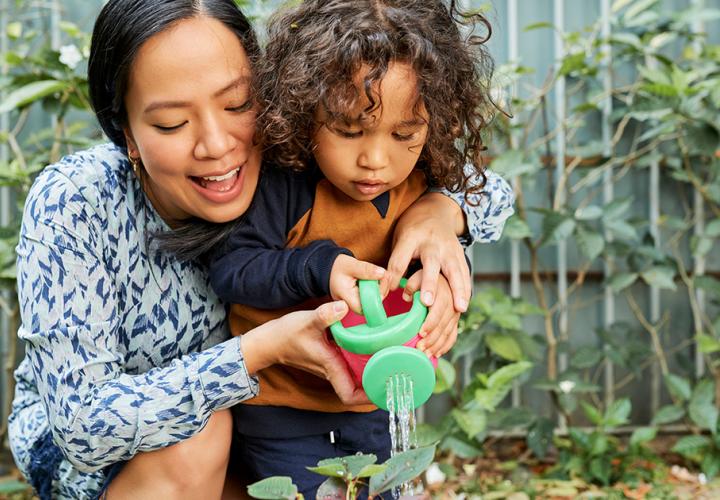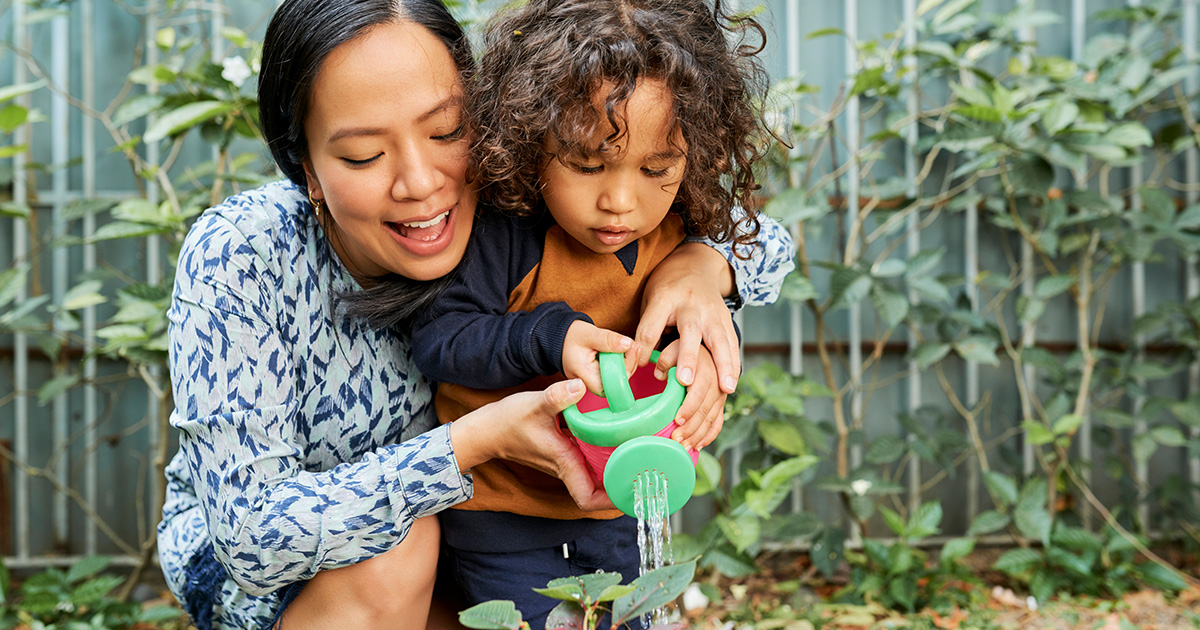You do not need a big, flat backyard to start a garden project. If you have limited outdoor space or other less-than-ideal conditions, here are ideas to get you started.
- Start small with an herb windowsill garden. Growing herbs is particularly fun for kids, because herbs grow very quickly from seeds and provide a perfect opportunity to do some taste testing.
- Plant in a grow bag. Grow bags can be used anywhere, are easy to move, and are perfect for growing fruits and vegetables that do not have deep roots – for example, tomatoes, strawberries, potatoes and salad greens.
- Repurpose your window boxes for your vegetable garden. Similar to grow bags, window boxes are great for growing plants that do not have deep roots. If you have a window box that’s six inches deep, try an assortment for summer salads: leaf lettuces, peppers and radishes.
- Connect with your local community gardening organization. Often, you may find a community garden right around the corner, which may be a great place to begin cultivating your green thumb. Ask around!
Build excitement for your garden project with your kids.
- Read a book about gardening together. There are so many wonderful books about gardening, which can help set the stage for the fun in store for you and your child. Check out your local library for inspiration.
- Create your garden project plan together. Talk with your child about the plants you want to grow together, and bring your child with you to select the seeds or seedlings for planting.
- Get dirty. Dig in together!
- Build a watering routine. Once your garden is planted, put your child in charge of watering! The responsibility cultivates their independence and confidence.
- Start a garden journal. Encourage your child to draw or take pictures and write notes to document your family’s garden journey.
- Plan a special meal with ingredients you’ve grown. Invite your child to design a meal that features ingredients from your garden. It can be as simple as an herb topping for a homemade pizza.
So map out your garden space, get some soil and seeds, and start planting. Happy growing!

